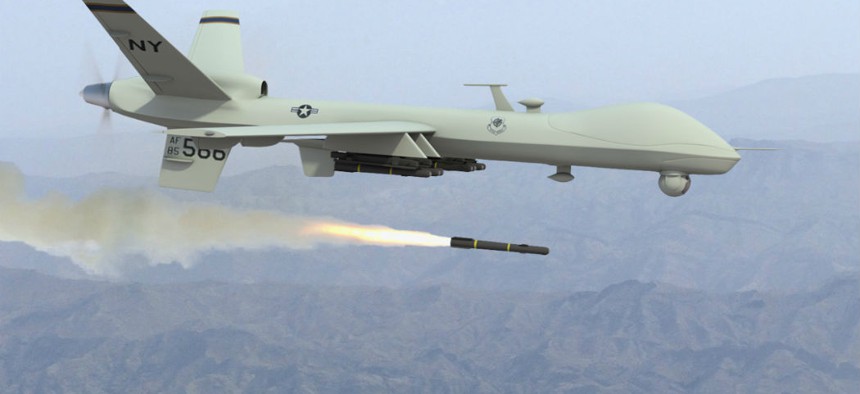New Lockheed drone software processes 3D terrain maps in real-time
Lockheed Martin’s Hydra Fusion Tools technology uses photogrammetry software to create tactical maps from drone video feeds.
Lockheed Martin’s Hydra Fusion Tools drone software now enables drones to form three dimensional terrain maps as they fly, providing real-time tactical information and mapping data for conflict or otherwise inaccessible areas.
“We can fly a drone along at 30 knots and create a map as we go,” said John Molberg, a spokesman for Lockheed Martin. It can generate maps with 30 cm per pixel resolution at that speed, but can be as clear as a 2.5 cm per pixel resolution at lower speeds and altitudes, he said.
The image-based mapping technology is known as photogrammetry, and it uses each frame of a continuous video recording to compile a 3D image of the geography beneath the drone. The movement of the drone means that each video frame captures the ground from a slightly different angle, and Hydra Fusion Tools’s software divides the video into hundreds of stills, using the subtle differences between them to construct the 3D map.
The key to integrating this technology with drones is the processing power provided by Graphic Processing Unit (GPU) chips.
According to NVIDIA, a key industry developer, GPU chips are able to facilitate 3D imaging by using a specific type of electronic circuit which, instead of repeatedly storing image memories, updates and alters memory within the frame buffer to produce a comprehensive image map.
Previously, helicopter-mounted aerial terrain mapping technology was used to inform tactical operations in Iraq starting in late 2004.
“We did all the major urban areas in Iraq, as well as all the major military supply routes…so the soldiers would have current imagery and elevation data,” said Michael A. Harper, Director of the Warfighter Support Directorate at the U.S. Army Geospatial Center.
According to Army statements, these terrain maps had resolutions of about 10 to 15 cm per pixel. At their fastest speed, the Hydra Fusion-equipped drones will only produce maps with 30 cm per pixel resolutions. However, the drones will be able to access and map geographically constricted areas and conflict zones that helicopters and fixed wing aircraft can’t.
“If you look at the types of operations that we’ve done…they are really planned at the tactical scale and executed at the urban scale or even that human scale,” explained Harper. “With your higher fidelity data, you can conduct more precise operations, you can reduce casualties and collateral damage.”
The Hydra Fusion Tools can also be used to provide real-time data of evolving situations on the ground, or for broad-range intelligence, surveillance, and reconnaissance purposes, according to Lockheed Martin.
The software was demonstrated at an innovations showcase at Lockheed Martin’s Missiles and Fire Control facility on Monday.





